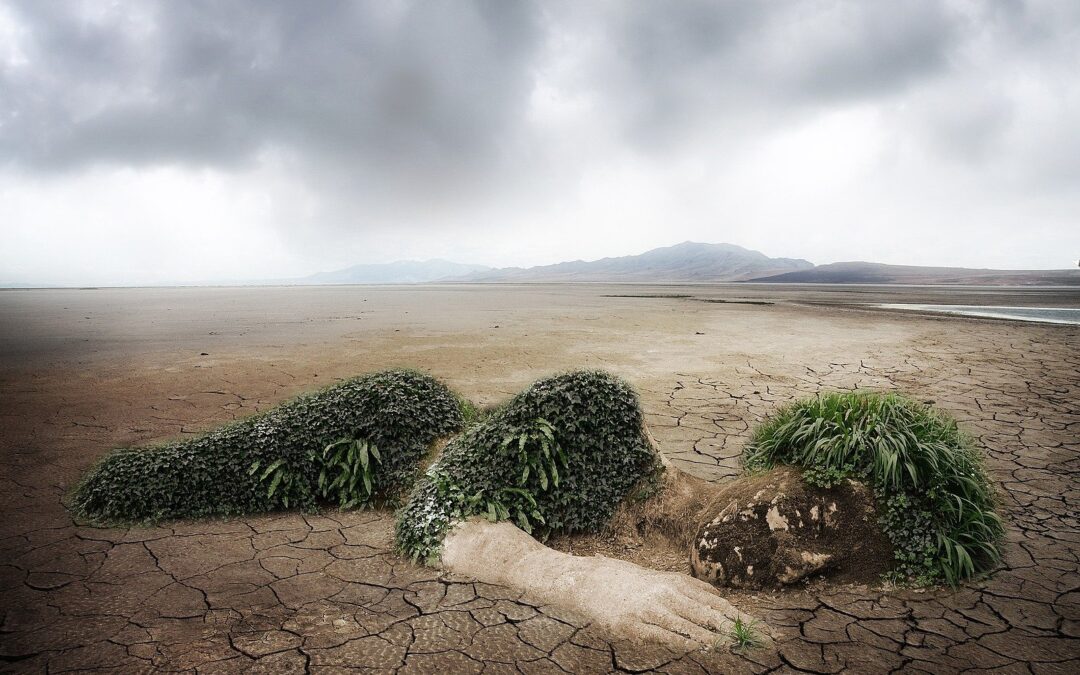Editor’s Note: This article is part of a collaboration between the Harvard Art Law Organization and the Harvard International Law Journal.
*Anna Pedrajas
As UN Secretary-General António Guterres addressed the UN General Assembly in September 2021: “We are on the edge of an abyss.” This powerful metaphor expresses the entire depth of the climate crisis: It is now undeniable that the society we have always known will change completely because of climate change. Amid the numerous consequences stands out the certain loss of cultural heritage. Unfortunately, as climate change intensifies, the international community’s capacity to safeguard its cultural assets appears negligible.
There is no doubt that protecting heritage is a daunting task, as the notion covers a large array of elements. An independent expert in the field of cultural rights, Farida Shaheed defined cultural heritage as “the resources enabling the cultural identification and development processes of individuals and groups, which they, implicitly or explicitly, wish to transmit to future generations.” Moreover, it is intricately linked to its environment and, therefore, indirectly threatened by the dangers looming over it. Climate change is thus dangerously testing its ability to withstand the passage of time.
Protecting cultural heritage in this context may sound like a lost cause. Everyone is a contributor to the phenomenon, and no place in the world will be spared. In that sense, it is an absolute planetary issue and has been defined as a “wicked problem,” and we are now fully conscious of its consequences for cultural heritage. From Venice to the artistic living practices of Pacific islanders, the examples are countless. Its survival thus directly depends on global action.
The current situation is far from encouraging, revealing both an ambition and an implementation gap. This calls for an analysis of international law’s capacity to grasp this issue.
The Inadequacy of Cultural Heritage and Environmental Law in the Climate Crisis
The study of international norms applicable to tackling the issue, such as international environmental law agreements, treaties on cultural heritage protection, or customary rules on prevention of environmental harm, leaves us with a nuanced picture.
First, international cultural heritage law is an incomplete framework. To this day, there is no overarching obligation upholding a general duty to protect all cultural assets without distinction and at all times; the approach could rather be defined as a piecemeal one, with several instruments tackling specific aspects of heritage. Not only do they rely on a selective listing approach, but also their processes are dominated by states parties and do not offer specific, binding obligations regarding climate change.
Since human cultural heritage is embedded in its natural environment, it benefits from its legal protection in international environmental law. Not only are states bound by a customary duty not to cause transboundary harm, but sectoral environmental agreements – such as the Paris Agreement, the UNCLOS, the UNCCD, and the Ramsar Convention on Wetlands also imply obligations. However, international environmental law also has its share of shortcomings: It leaves discretion to states, is not complemented by strong enforcement mechanisms, and has no overarching instrument upholding a general duty of protection. It is criticized for its poor record in effectively safeguarding the environment.
International Human Rights Law’s Contribution to the Safeguarding of Cultural Heritage amid Global Change
Thankfully, international law also presents frameworks that could be more successful in addressing cultural heritage issues in the face of climate change. Such is the potential contribution of human rights law. Indeed, it offers a wide range of tools and mechanisms that lay a strong base of duties for states and can be used directly by individuals to denounce abuses and claim reparations. The essence of international human rights law lies in an obligation for states to protect human rights, notably cultural ones, on their national territory. Thus, it establishes itself as a much-needed complement to agreements limiting themselves to horizontal obligations between states and could reinforce cultural heritage protection in the face of climate change.
Even if there is not, to this day, a clear standalone right to cultural heritage in international law, several others can tackle cultural assets and safeguard cultural diversity. These conventions require states to adopt measures to ensure respect, protection, and realization of human rights in their domestic order, lay clear duties, and offer mechanisms to seek redress in case of violation.
The most fundamental provision for our study would be Article 15 of the International Covenant on Economic, Social and Cultural Rights, which affirms the universal right to take part in cultural life. Since it does not differentiate between cultural assets and calls for global protection, it is a crucial legal tool to effectively advance the safeguarding of culture in the face of climate change. It is reinforced by regional instruments that also lay obligations in the matter and establish strong enforcement mechanisms, such as the Inter-American and African human rights systems.
Besides, some cultural assets benefit from specific, additional protections. For instance, Article 27 of the International Covenant on Civil and Political Rights focuses on the culture of minorities, while Article 31 of the UN Declaration on the Rights of Indigenous Peoples affirms the protection of their cultural heritage and expressions.
Other human rights can contribute to the safeguarding of culture. We can consider, for instance, religious rights, the right to self-determination, or the right to a healthy environment. Even if it is only binding at the regional level to this day, the latter gives a basis for global protection of the environment, its components, and, therefore, the human society that depends on them.
Thus, thanks to systemic integration, which has led to the climatization of human rights law, victims of climate change can defend their interests and demand more ambitious climate action. This strategic use of human rights provisions on culture to advance climate action and obtain climate justice for cultural assets keeps proving itself to be a promising legal avenue. Recent developments, such as two distinct decisions from the Committee on Economic, Social and Cultural Rights and the Committee on the Rights of the Child, in the same context of harmful mining activities denounced by Sami populations in Finland, corroborate that judicial and quasi-judicial powers may help serve the protection of cultural rights. This argument has been accepted in the context of climate change, as the Torres Islands petition in front of the Human Rights Committee confirmed. As it has been suggested, cultural rights might be a more adequate tool than other international norms and other human rights to advance climate action and could be used to carry out strategic litigation. Other cases could draw inspiration from these precedents and arise in the future. Recent developments at the domestic level, such as the Bonaire case in Dutch courts, confirm this potential. But additional elements indicate that culture will not be safeguarded through the courts alone.
Human Rights Litigation’s Unfortunate Shortcomings in Protecting Cultural Heritage
Even if it has the potential to realize climate justice, human rights litigation is not immune to hurdles and will not be a panacea.
First, there are shortcomings directly imputable to the international legal order. Whereas human rights litigation depends on the ratification of instruments and the acceptance of human rights bodies’ jurisdiction, decades of practice reveal that its contribution should be relativized due to reluctance to implement judicial decisions.
Domestic litigation also faces its hurdles. Seeking climate obligations and reparations requires grasping complex questions of causation that courts will not be the most legitimate authorities to solve, and adequately repairing this noneconomic damage will be a thorny issue. Judges have also been cautious not to overstep their functions and instead leave freedom for states to implement decisions and remedy harm. The recent European Court of Human Rights’s decision, KlimaSeniorinnen v. Switzerland, is a powerful example of such restraint.
More generally, human rights law presents its share of conceptual difficulties. There exists a divergence of views between human rights bodies on the idea of extraterritorial application of conventions. Even if the Inter-American Court, in its 2017 advisory opinion, affirmed a duty to prevent environmental harm to avoid causing human rights harms to populations abroad, and found support in the Committee on the Rights of the Child, this revolutionary position in favor of a broader conception of transboundary dynamics was not shared by the European Court in its recent decision. Thus, due to these nuanced positions on “diagonal” complaints directed toward a state by foreign individuals, the possibility of getting redress for harm might appear uneven.
Finally, there are practical issues as well, such as the costs of human rights litigation and the magnitude of the compensation that is owed.
It appears that litigation will not suffice to protect cultural assets in the face of climate change, and that actions are needed beyond the courtroom. For these reasons, it is essential to view litigation as a tool to bolster climate negotiations.
Completing Climate Justice: Potential Legal Developments in Favor of Cultural Rights
Since everything is interconnected, the most specific action can contribute to a bigger purpose. Through a trickle-down effect, we can guarantee the conservation of culture by spurring environmental and climate action more generally, or by integrating it into other regimes.
Invoking human rights obligations linked to culture would be an effective way to advocate for normative improvements. Relying on human rights obligations, such as the obligation to cooperate, could be an impetus for states to negotiate new instruments in order to advance the protection of cultural assets. For instance, one could consider acknowledging that human expressions are inextricable from their environment, possibly through reference to biocultural rights.
Besides, it is essential to take the “humanization” of climate change law one step further, and require states to integrate human rights into their nationally determined contributions and report on the subject.
Developments may also be called for to overcome the verticality paradigm in the field of human rights law. Some have called, for instance, for a responsibility of repairing harm caused to foreign populations. Such a progressive interpretation of human rights instruments could turn out to be an essential aspect of addressing climate change harm, especially with regard to cultural losses.
Finally, the protection of culture will depend on the international community’s ability to rethink its governance of global issues. Proclaiming a general environmental duty through a universal human right to a healthy environment would ensure holistic protection, and answering the call for solidarity in international law by spurring cosmopolitan and intergenerational justice would contribute to safeguarding not only cultural heritage, but the climate as well.
Conclusion
Cultural heritage protection might sound like a drop in the ocean of climate justice, but it may actually go a long way in protecting the climate. Normative development in favor of cultural assets would contribute to global environmental protection. Thus, the quest for cultural rights justice can be a powerful tool to tackle climate change and strengthen global governance.

